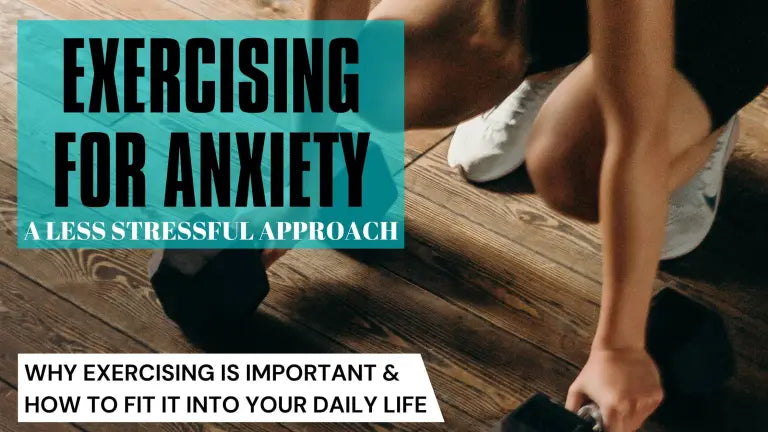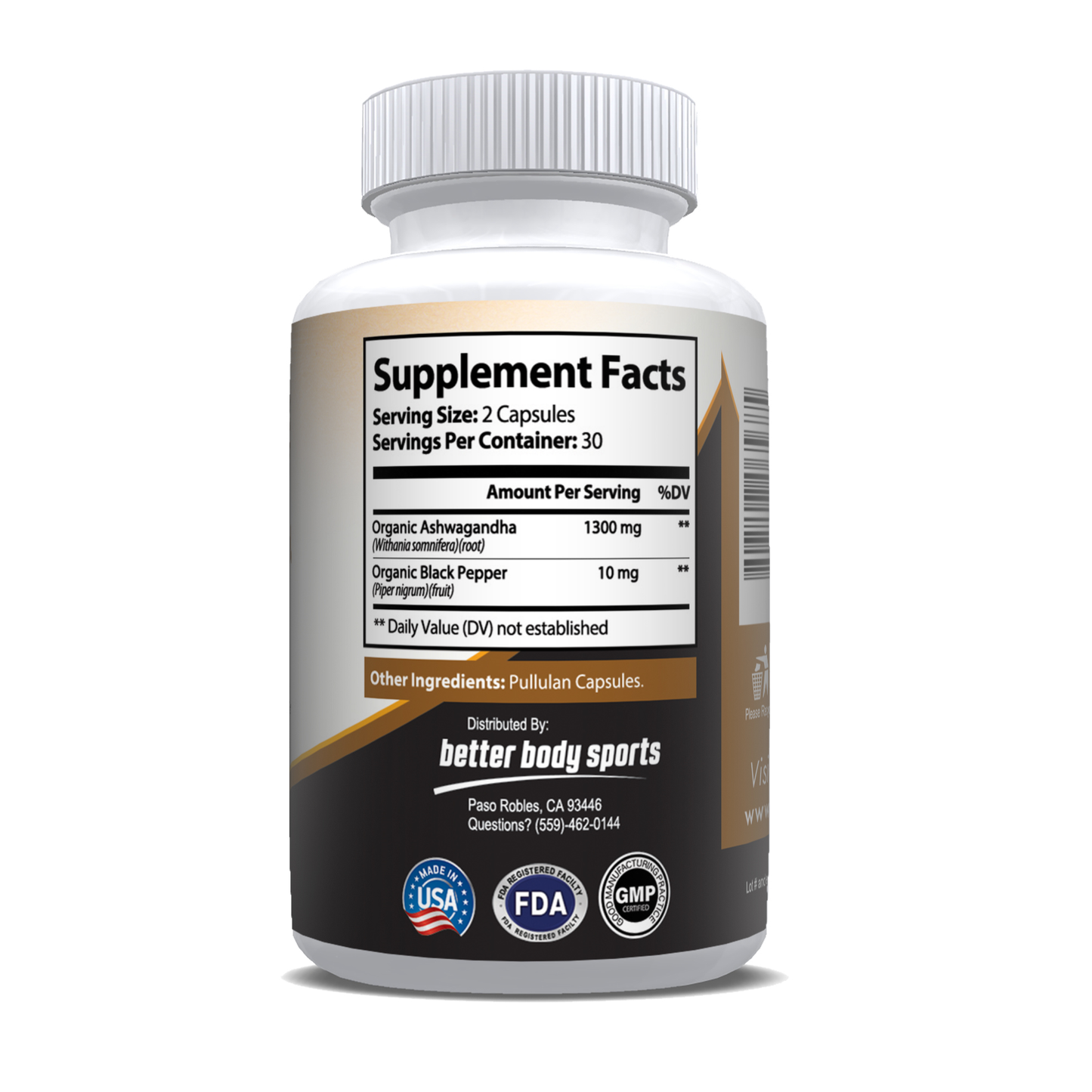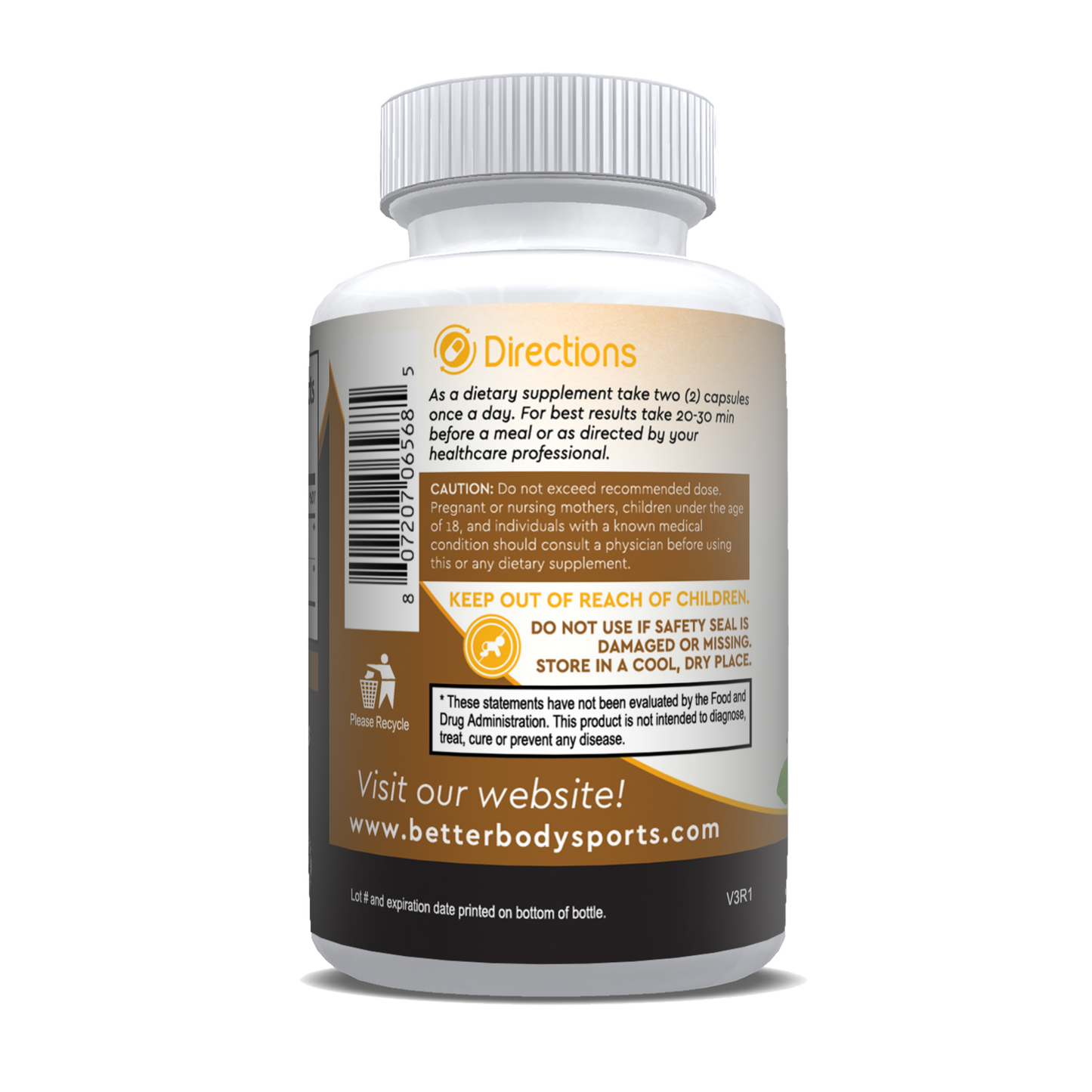
Exercising For Anxiety
Share
Reducing anxiety isn’t often the first reason we believe that increasing physical activity is a good idea. In a vain thought, we exercise because we want to look our best for other people. In a healthier perspective, we exercise because we want to improve our physical health, either to reduce pain or to prevent or manage a potential disease.
But with stress being an epidemic in today’s society, exercise has become a non medical and medical prescription to help people manage anxiety.
My Anxiety and Exercise Testimony
Reflecting on my youth, I now see the totality of how much anxiety I carried. The weight of anxiousness was often too much for me to bear, and it came out in my actions. Many of the issues masked themselves as fits of anger, but with hindsight on my side, it was anxiousness paired with an outcome that did not meet my expectation.
At 17 I began lifting weights to build muscle. Yes, the reasoning was vain as a girl-friend made it clear to me I was cute but way too skinny. Since my grandfather and father lifted weights, taking steps to improve my physical fitness was not a hard decision to make.
How Physical Fitness Affected My Anxiety
While I had no intentions of reducing depressive symptoms through physical activity, I can clearly see how it played a role. My senior year of high school I experienced the following.
- I received better grades in school, mostly because of my increased confidence but also because of increased concentration and mental endurance.
- Playing on the varsity golf team, my performance was more consistent because I was less anxious before shots.
- Yes, I was less affected by anxiety when speaking to pretty girls which led to more dates and girlfriends.
There is an interesting truth about how significant this mental health improvement was. This point of transformation was actually a troublesome time for my family. During the same period of life, my father began suffering from a mental disorder that he could not escape from. His actions had a direct impact on my life.
If I am being truthful, anxiety has been an issue that I’ve wrestled with for my entire adulthood. However, by developing a toolkit with tools that help me manage anxiety symptoms, I can now minimize its impact and shorten the life of its effects.
The Cyclical Effect of Anxiety
If you are reading this, then you may already understand what I am about to say. Anxiety builds upon itself. When you experience anxiety symptoms, they often bring about more symptoms. These symptoms may include:
- Shortness of breath
- Muscle tension
- Negative thinking
- Elevated heart rate
- Anger and aggression
- Uncontrollable appetite
- Unhealthy addiction habits
- And the list goes on…
The whirlwind this creates can make it hard to feel that escape is a real possibility, but you can. While it does not replace medical intervention for chronic anxiety and depression, exercise is generally a recommendation by all health professionals. Exercise is one of the first steps you can take for generalized anxiety that can turn the train around and get yourself headed in a more positive direction.
Why Exercising for Anxiety is a Good Idea
You have heard it said that exercising is a good stress release. But while there is an overlap between stress and anxiety, there are also differences. Anxiety includes excessive amounts of worry, doubt, and fear, which unnecessarily elevates the stress hormone cortisol. These feelings can lead to being “stuck” in the moment, unable to escape from negative thinking.
Exercise Makes You Feel Good
Exercise releases endorphins that produce a feel-good response in the brain. But to get the maximum mental health benefit that endorphins offer, you need to perform regular aerobic exercise along with moderate resistance exercise.
Exercise Makes You Think Clearly
There is a significant amount of research that shows exercise increases a chemical called brain derived neurotrophic factor or BDNF for short. BDNF helps in multiple ways, which include neurological disorders. Keeping our brains sharp is a good way to protect against poor or irrational thinking.
Exercise Gets the Blood Flowing
Exercise pumps blood throughout our body and leads to an increase of the blood vessels called vasodilation. When stressed or sedentary for too long, the opposite effect occurs, which is known as vasoconstriction. Vasoconstriction not only increases stress, but one study suggests it may also contribute to cardiovascular disease.
Why You Don’t Want to Exercise When Anxious
Let’s be honest, when they are in the middle of an anxiety attack, very few people have the desire to run to a gym and perform intense exercise. Even past the point of attack, the energy exhausted from us makes heavy resistance exercise or high intensity aerobic exercise sound more painful than it is worth.
The thought of exercising for anxiety may actually bring about more anxiety. Working out can make us self conscious about our physical appearance and performance abilities. It also can be difficult and hard work isn’t something we look for when trapped in the anxiety loop. More often, we want the easy way out.
But with that said, we know we need to exercise. So how do we get ourselves to the point where we feel confident enough to include exercise into our routine.
What is the Definition of Physical Exercise?
When you hear the word exercise, what visual image do you see? Do you see people working out that are sweating and out of breath? Often, the image we experience when we think of exercise is both physically and time intensive.
But this isn’t what physical exercise actually means. By engaging in physical exercise, we are simply moving our body. This means simple forms of physical activity, such as moderate paced walks and stretching, are appropriate exercise options.
By redefining the term physical exercise, you can reduce the anxious effect that is created when we think about following an exercise program that helps us manage anxiety.
The Best Form of Exercise For Anxiety
We will need a 2-step approach when we exercise for anxiety. This approach helps us preventatively manage anxious feelings and have a strategy for stepping out of the cyclone during an anxiety attack.
Preventative Anxiety Management
The first step is not to lace your shoes and start working out. The first step is to create a plan for regular physical activity. Creating a plan is one of my fundamental tools for reducing anxiety in every area of life.
I do not believe I am alone by experiencing anxiety when feeling that things are out of my control. With a pen and paper, take some time to write out the ideas you have about reducing anxiety through exercise.
Ask yourself these questions:
- What type of exercise do you feel you are ready for, both physically and mentally?
- What type of exercise would you enjoy and could have a positive effect on your wellbeing?
- What type of time commitment can you realistically make to an exercise program?
Creating a preventative treatment plan for managing anxiety is perhaps more important than what to do “in the moment”. It is easier to make positive choices before experiencing the physical symptoms associated with anxiety.
Feeling Anxious in the Moment
Anxiety management means that we are controlling it, not eliminating it. Everyone faces anxious feelings, and it is important that you understand you are not alone in being unable to rid yourself of anxiety entirely.
When you redefine exercise to mean any form of increased movement, you allow yourself more choices for physical activity. Here is a brief list of things you can do in the moment that we would consider a low impact exercise intervention.
- Walking
- Gardening
- Stretching
- Cleaning the house
- Tai Chi
- Playing golf
- Shooting hoops
- Controlled breathing exercises
Some of these may not resonate with you and the good news is, you don’t “have” to do any of them. What you need is to do is grab hold of something small so that it is within your control. Any action taken that is a positive for your physical and mental health counts as exercise in our book.
Finding Help When You Need It
Speaking to a trusted medical professional about your feelings is the first step to finding the right help. Determining if you are suffering from a generalized anxiety disorder, panic disorder, or a form of mental illness provides clarity to the next action steps needed.
Regular exercise is a consideration for these conditions. Ask your Doctor for any resources available that can help you make physical fitness a regular part of your daily life. Asking this one question may be the single most important decision you make in managing anxiety.
Call or email us directly if you need exercise specific advice, nutritional guidance, or lifestyle recommendations. Our team of Certified Personal Trainers and Fitness Professionals would be glad to assist you in making regular exercise a part of your life.





